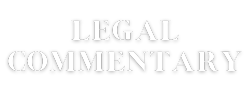As packaging technology evolves, it is reflected by dairy packaging trends throughout the world. Though not every sector advances simultaneously, there are identifiable and quantifiable trends. Many factors come into play in the design and development of dairy packaging, and there is more to consider because it must be food safe for consumption purposes. This is required by various laws across nations, and by consumer demand. Additional concerns and considerations when designing dairy packaging include:
- Contamination, whether intentional or not, from biological or chemical or physical sources.
- Oxidation-reduction.
- Protect the quality of the product until the expiration of its shelf life.
- The convenience of use by consumers.
- Safe for usage and during transportation from manufacturing to distributor to consumer’s home.
- Dairy Packaging Materials for Products
Depending on the dairy product, one type of packaging material may be more appropriate than other types of packaging material. Currently, global dairy packaging reflects these trends:
- Powdered milk: nitrogen packed with a lacquered flexible laminate (AL foil, BOPP, and PET containers), refillable packs such as a bag in a box, and tin containers.
- Liquid milk: PET bottles and pouches, LLDPE tetra pack in combination with glass bottles and LDPE film.
- Local or regionally available milk products: self-standing laminate pouch, injection-molded or thermoformed container.
- Butter: tinplate container, duplex board, and vegetable parchment paper, AL foil.
- Cheese and cheese spread: tin plate container with a lacquered inner protectant and packed inside AL foil inside a duplex carton.
- Ghee: glass bottle, tinplate container, HDPE film pouch
- Ice cream: duplex board carton, thermoformed or injection molded container, PET or laminate of BOPP.
Dairy Packaging Innovations and Drivers
Food packaging technology is driven by various factors, and those factors change over time. Consumer demand is the primary driver, yet the needs and desires of consumers is itself in flux and susceptible to change over time. One trend is the increasing demand for dairy products and other consumables that are processed as little as possible. Another trend is the preferred method of distribution of products from source to consumer table. Online shopping rather than in-store shopping is on the increase. Other identifiable trends include:
- Dairy distribution centers that utilize automatic processing and handling technology,
- An emphasis on consumer health and safe practices for dairy packaging.
- The development of new dairy packaging technologies such as nano packaging, packaging based on regional distribution, intelligent packaging, and active packaging, controlled and modified atmosphere packaging.
Controlled and Modified Atmosphere Packaging
When the air in dairy containers is replaced with a type of gas or a mixture of different gases, this is known as modified atmosphere packaging. Usually, the gas is N2 and O2 or another form of primarily carbonic acid gas. Controlled atmosphere dairy product storage relies on the adjustment of gas levels within gas-tight containers. This allows for longer storage times and a higher quality of dairy products.
